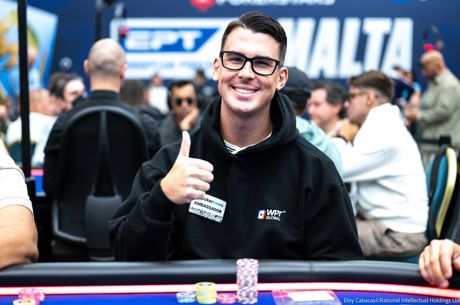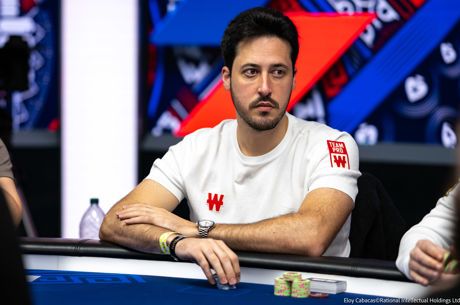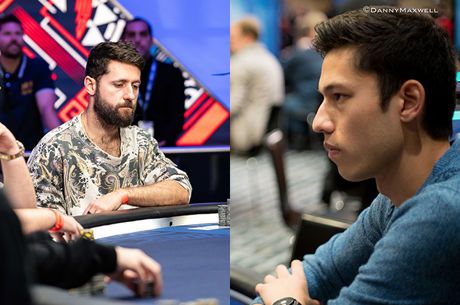10 Tips for Sit & Go Success: Three-Handed Play

Last week, we discussed beginner strategy for the bubble of a standard, nine-handed, single-table sit & go in which the top three spots pay (50/30/20 percent). This week, we will discuss strategy for three-handed play. We are in the money and our main goal now is to take the lion's share of the prize pool and all the glory.
Play for the win
First, let's take a look at the math of a hypothetical scenario to see why playing for the win is the correct strategy in these kinds of SNGs such as are popular when you play poker online.
Let's imagine you can choose to play so conservatively in a SNG that you completely eliminate the possibility of taking third or first — a low variance strategy that would guarantee you 30 percent of the prize pool.
Then let's assume you could instead play so aggressively that you would never take second, and half the time you take third and win 20 percent of the prize pool and the other half of the time you take first and win 50 percent of the money.
This second strategy guarantees you 35 percent of the prize pool on average (i.e., better than the 30 percent for second). Even if you ran badly and only got first twice every five times, you would still win 32 percent on average and outdo your nitty, second-place finishing opponent. Embrace the variance my friends.
As the short stack, gamboool!!!
When you are the shortest stack, you don't have anything to lose. You've already locked up a cash and it will be difficult to ladder given how cautious the middle stack should be playing. With only three players left, the blinds will be coming around fast and furiously, so you are forced to gamble to keep yourself from blinding out.
Make standard Nash shoves and calls against the medium stack, but open up your range a bit against the big stack. He may he less inclined to call your shoves because the longer the bubble lasts, the more chips he will make. Also, you can call his shoves slightly wider if he had to go through the middle stack to get to you. Oftentimes this shove will be wider than normal because of how tight the middle stack has to call with you sitting behind him.
The flipside of this is also true. You should call tighter if the big stack shoves and you have to act before the middle stack. If you call, the middle stack will be incentivized to call as well because you have to win the pot outright to survive whereas he only has to beat you to get second place.
As the middle stack, attack the short stack and trap the big stack
When you are the middle stack, you really don't want the short stack to hang around. As long as he's there, the big stack can have a field day. You shouldn't pass on any +EV spots against the short stack, but you also don't want to get too out of line and double him up unnecessarily.
Against the big stack, you have to be cautious with your marginal hands, but you can widen your value range a bit. If he is playing well, he will be coming after you with a wide range of hands. This opens up an opportunity for you to get an easy double-up if you happen to pick up a strong hand and induce him to bluff shove on you.
As the big stack, attack the middle stack and consider protecting the short stack
When you are the biggest stack, you want to steal as many pots as possible before someone wakes up with a hand. The middle stack will be the easiest to steal from, especially when the short stack has folded. When this is the case, you can go crazy against him. Force him to pick up a real hand.
If the shortest stack is close in chips to the medium stack, neither player will be overly tight. This means that you should just stick closer to the Nash ranges. On the other hand, if the short stack has a lot less than the middle stack, then you can crank up the aggression on the middle stack who will be insanely tight.
For this reason, you may even consider keeping the short stack around by giving him walks when he starts to get pot committed (i.e., down to around 2-3 big blinds). As stated earlier, the longer the bubble last in this scenario, the more pots you will win without a fight.
Conclusion
We play poker for money, so if you get to three-handed, getting second is a nice consolation prize — but that should rarely be the goal. The vast majority of the money is up top, so you should give yourself a fighting chance to get to heads-up play with a competitive stack. Next week, we will examine the best way to approach the end game.
Also in this series...
- SNG Pros & Cons
- Assessing Structures and Speeds
- Introducing the Independent Chip Model
- Practical Applications of ICM
- Early Level Play
- Middle Stage Strategy
- On the Money Bubble
- How To Play Heads-Up
- Managing Your SNG Bankroll
Ready to start giving sit & gos a try? Put these tips into practice at 888poker.










